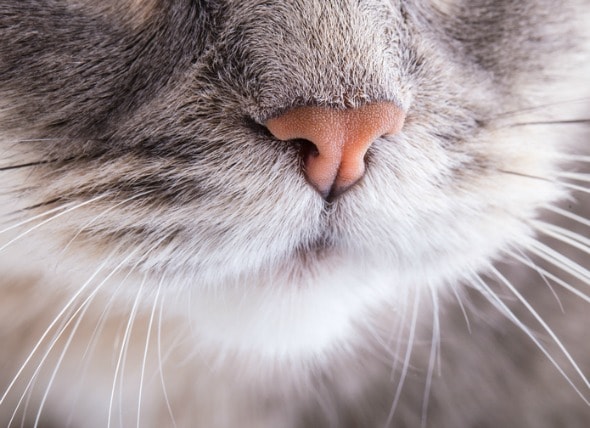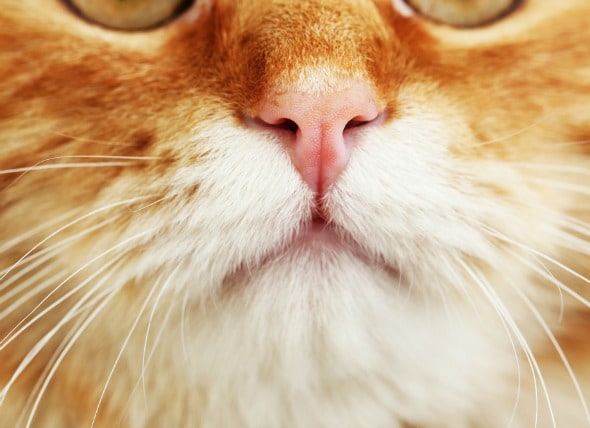rhinitis in cats vca
This syndrome may also be referred to as chronic obstructive pulmonary disease COPD. The most common form is termed chronic post-viral or idiopathic rhinitis.

Chronic Upper Respiratory Tract Disease Vca Animal Hospitals
WORK-UP A thorough workup for both species includes nasal radiographs endoscopic evaluation of the caudal nasopharynx and rightleft nasal cavities appropriate biopsies and an aggressive nasal flush.

. Chronic Rhinitis in the Cat. Asthma and bronchitis are typically considered as two parts of the same syndrome. Clinical symptoms of more serious infection although rare include fever vomiting.
When image slices are collected in an axial fashion the computed tomography table supporting. In unvaccinated cats chronic upper respiratory tract disease is a relatively common problem. And has a predisposition for Dachshunds.
Symptoms of upper respiratory tract infections include clear or colored discharge from the eyes or nose coughing sneezing swelling of the mucous membranes around the eyes conjunctivitis see Figure 2 ulcers in the mouth lethargy and anorexia. If the nasal passages deteriorate and fail to function properly a major. Cats with chronic rhinitis have a single significant different etiology compared with dogs and that is Feline Herpes Virus 1 FHV-1.
Chronic Rhinitis in Cats Ned F. Chronic or recurrent signs including stertor nasal discharge serous mucoid or. Pharyngitis is inflammation of the walls of the throat pharynx.
Chronic rhinitis can be found cats of any age or breed although the causes are likely to vary depending on age. Inflammation or other damage to the nasal mucous membranes are common upper respiratory tract disorders in cats. The term feline bronchitis describes the coughing andor wheezing that comes from inflammation in the lower airway.
In an investigation of nasal disease in the cat at the University of Bristol in 2004 a retrospective study was undertaken of 77 cats presenting for nasal disease. While in younger cats the causes of rhinitis are more likely to be viral older cats will more often experience the symptoms of chronic rhinitis due to a tumor or other disease. Several treatment options are provided although cure of this frustrating disease is rarely achieved.
Chronic rhinitis in cats is prevalent yet. Johnson Davis California Vanessa R. Barrs Sydney Australia Sneezing and nasal discharge in the cat can result from infectious inflammatory or neoplastic disease.
An Update The etiology of feline chronic rhinitis is incompletely understood and often is a diagnosis of exclusion. Cats with rhinitis display variable degrees of hyperemic mucosa moderate to large amounts of mucoid to purulent discharge and irregular turbinate structures. Chronic rhinitis accounted for 27 or 35 of cases.
With these clinical signs included nasal. Many believe the clinical signs observed in cats are related to an irreversible destructive process within the nasal. This disorder is most commonly found in dogs.
History clinical signs and investigations performed to reach this diagnosis are discussed. Rhinitis in Cats Lynelle R. Chronic Rhinitis in Dogs Chronic nasal disease is an infrequent problem in dogs.
Chronic inflammation allergies. Mouth pain and resistance to having the mouth opened may indicate an abscess pocket of pus and infection at the back of the throat or the. Henselae infections in cats also known as feline bartonellosis may occasionally cause a self-limiting transient febrile illness that lasts for approximately 48-72 hours.
Most cats with idiopathic chronic rhinitis are thought to have had viral FHV or FCV URT infections in early life although they may not manifest active viral infection as adults. Rhinitis is inflammation of the mucous membranes of the nose. Feline viral rhinotracheitis feline herpesvirus and calicivirus were the primary causes of chronic upper respiratory tract disease prior to the development of vaccines in the 1970s.
The most common syndrome is likely chronic rhinosinusitis CRS a disease with high morbidity in the feline population but uncertain etiopathogenesis. Has few effective treatment options. Cats with rhinitis may show any number of the following symptoms.
4 Transmission Pathogens enter through the oral and nasal conjunctiva. What are the clinical signs of idiopathic chronic rhinitis in cats. Previous studies demonstrated feline herpes virus I can destroy cartilage called turbinates in the nasal cavity.
The most common syndrome is likely chronic rhinosinusitis CRS a disease with high morbidity in the fel ine population but uncerta in etiopathogenesis. Sinusitis is inflammation of the lining of the sinuses. Calicivirus infections in cats may cause lesions of the mucous membranes in the mouth and throat.
Pawing at the face Nasal discharge Sneezing Loss of appetite Decreased airflow Breathing through the. In this condition a viral infection eg caused by feline herpesvirus or feline calicivirus causes the initial mucosal damage but the chronic signs relate to secondary bacterial infection of the damaged nasal. Kuehn DVM MS DACVIM Chronic rhinitis is a common and important problem in cats potentially resulting from a number of intranasal or systemic disorders.
Sinu-Help for Cats Addresses Sinus Symptoms Including Runny Nose Sneezing Cough in Cats. It accompanies most upper airway viral and bacterial respiratory infections. Ad Natural Herbal Remedy for the Relief of Rhinitis in Cats.
There are many causes of this relatively common problem in cats. Computed axial tomography images are made by rotating an x-ray tube head around the patient in the area of interest. Rhinitis and sinusitis often occur together which is termed rhinosinusitis.
For most cats with. Lymphocytic-plasmacytic rhinitis L-PR is a nonspecific inflammatory condition associated with antigenic and irritant stimulation. However when present it.
In cats chronic nasal inflammation called rhinitis can be documented at any time after six months of age. Sneezing and nasal discharge in the cat can result from infectious inflammatory or neoplastic disease. The clinical signs are those commonly seen with nasal diseases including sneezing and nasal discharge of varying character.
The presence of inflammatory cells within the airways. Destructive rhinitis is evident as increased space between the turbinates and is typically an indicator of long-standing or severe inflammation. Idiopathic chronic rhinosinusitis and nasal neoplasia are the most common causes of chronic nasal disease in cats.
FHV and FCV replication occurs in the mucosa of the nasal septum nasal turbinates nasopharynx and tonsils. Naturally infected cats are primarily asymptomatic subclinical carriers of Bartonella henselae. Disseminated intravascular coagulation DIC is an extreme complication of numerous already life-threatening conditions leading to the deregulation of the bodys natural mechanisms of blood clotting and blood clot dissolving.

Nasal Discharge In Cats Runny Nose In Cats Petmd

Feline Rhinitis And Upper Respiratory Disease Today S Veterinary Practice

Feline Rhinitis And Upper Respiratory Disease Today S Veterinary Practice

Hospital Picture Of Vca Neshaminy Animal Hospital 2153551116 Animal Hospital Hospital Hospital Pictures

Nasal Discharge In Cats Runny Nose In Cats Petmd

Nasal Polyps In Cats Vca Animal Hospitals

Chronic Upper Respiratory Tract Disease Vca Animal Hospitals